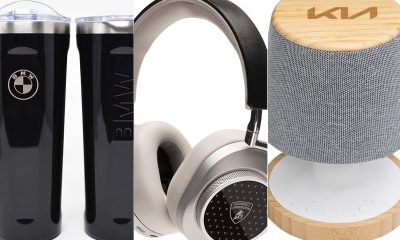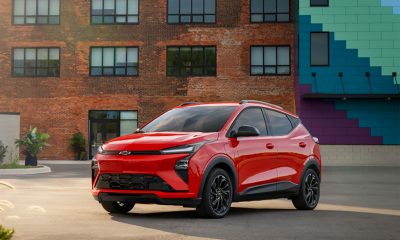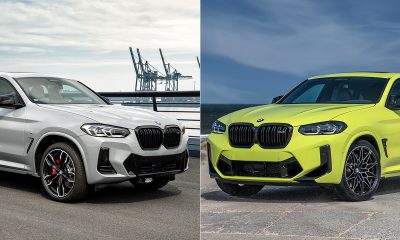Autos
All charged up: BMW i7 xDrive6
Fairy dust goes a long way in this all-electric luxe sedan

Sometimes it’s good to be a fairy godmother. That’s how it was for me when organizing a surprise dinner party for my husband Robert, who was celebrating a milestone birthday.
Event planning isn’t my thing, yet somehow the stars aligned. It seemed like all I had to do was wave a wand and — voila! — the magic began.
Make reservations at a fave intimate restaurant, which often gets booked months in advance? Zing! Ensure that family and childhood friends from across the country could all attend the same weekend? Zing! Find a handsome pianist to serenade us with Broadway show tunes. Zing again!
The only thing missing: a stunning chariot. But then, at the last minute, my test car for the week turned out to be—zing!—the all-electric BMW i7 xDrive60 glam sedan.
BMW i7 xDrive60
$121,000
MPGe: 87 city/95 highway
Range: 291 to 321 miles
Fastest charging time: 212 miles in 34 minutes (80% charged)
PROS: Hyper fast. Sublime cabin. Dazzling tech.
CONS: Pricey. So-so cargo area. A sedan in a world of SUVs.
IN A NUTSHELL: To drive or not to drive, that’s the question with the BMW i7. Rarely is it more exciting to be the passenger than the driver in a sports sedan, especially a Bimmer. But as I chauffeured my husband to the restaurant on his birthday, he seemed to be having way too much fun enjoying the dizzying array of creature comforts.
Spa treatment. The futuristic seats, made of quilted Merino leather, are as plush and comfortable as anything from Roche Bobois. But the optional cashmere/wool fabric looks and feels even better. All seats—both front and rear—come with ventilation and heating that activates much quicker than in most cars. The superb massage function does bodywork like a real masseur—but without the need to tip 20% when your session ends.
Concert-hall acoustics. Other high-priced rides offer premium audio, but the standard Bowers & Wilkens stereo in the i7 is bravo: 18 speakers and 655 watts. Better yet, my test car had the much-ballyhooed Diamond Surround Sound System, with 36 speakers powered by a 1965-watt amplifier. Yes, two of those speakers use actual diamonds to increase clarity. The result is perhaps the best-sounding vehicle acoustics ever.
IMAX-like screen. The Rear Executive Lounge Seating package adds a reclining right rear seat with footrest and a center console with foldable table that serves as a floating desk. Think first-class seating on an airplane. Most impressive is the huge, 31-inch 8K theater screen that drops down from the ceiling and comes with Amazon Fire capability. All rear window shades lower and the panoramic-glass roof shade closes when in theater mode. Built tastefully into the armrest on each rear door is what looks like an Apple iPhone to control the rear lighting, movie screen and other functions. Any home theater system should be so good.
Racecar features. Up front, the driver is spoiled with many other goodies. A curved digital screen, the same as in the cutting-edge BMW iX SUV, houses a 12.3-inch instrument cluster and 14.9-inch infotainment monitor. Two motors—one for each axle—creates an impressive 536-horsepower. Press the accelerator and—whoosh!—the i7 sprints from 0 to 60 mph in just 4.1 seconds. The amazing auto-leveling suspension absorbs potholes and speed bumps as if this 6,000-pound sedan were floating on air.
Rolls-Royce aura. BMW, which also owns Rolls-Royce, has sprinkled the i7 with stately design cues. This includes softer, more graceful styling and none of the severe, chiseled angles of previous BMWs. Other plusses: Swarovski crystals in the headlights and 22 precision-focused LEDs in the high beams. But the illuminated grille, while impressive, has a more ominous vibe. (Stephen King’s Christine, anyone?)
Full-size comfort. The i7 is a full-figured ride, more than 17-feet long and 6.4-feet wide. Here’s where the automatic parking comes in handy, allowing this BMW to parallel or perpendicular park itself. Trunk capacity is 18 cubic feet, which is decent but less than some competitors. Inside, though, there are plenty of clever storage compartments.
A pretty penny. Full of options, my test car was a wallet-busting $152,000. But that’s a bargain—well, sort of—compared with the high-performance i7 M70. With 650 horsepower and a 0-to-60 time of 3.5 seconds, the M70 is the fastest all-electric M car ever made. It also costs $169,000.
Alas, such sticker prices are too rich for my blood. Sorry Robert, maybe if we win the lottery.
Autos
Revving up the holidays with auto-themed gifts
Lamps, mugs, headphones, and more for everyone on your list
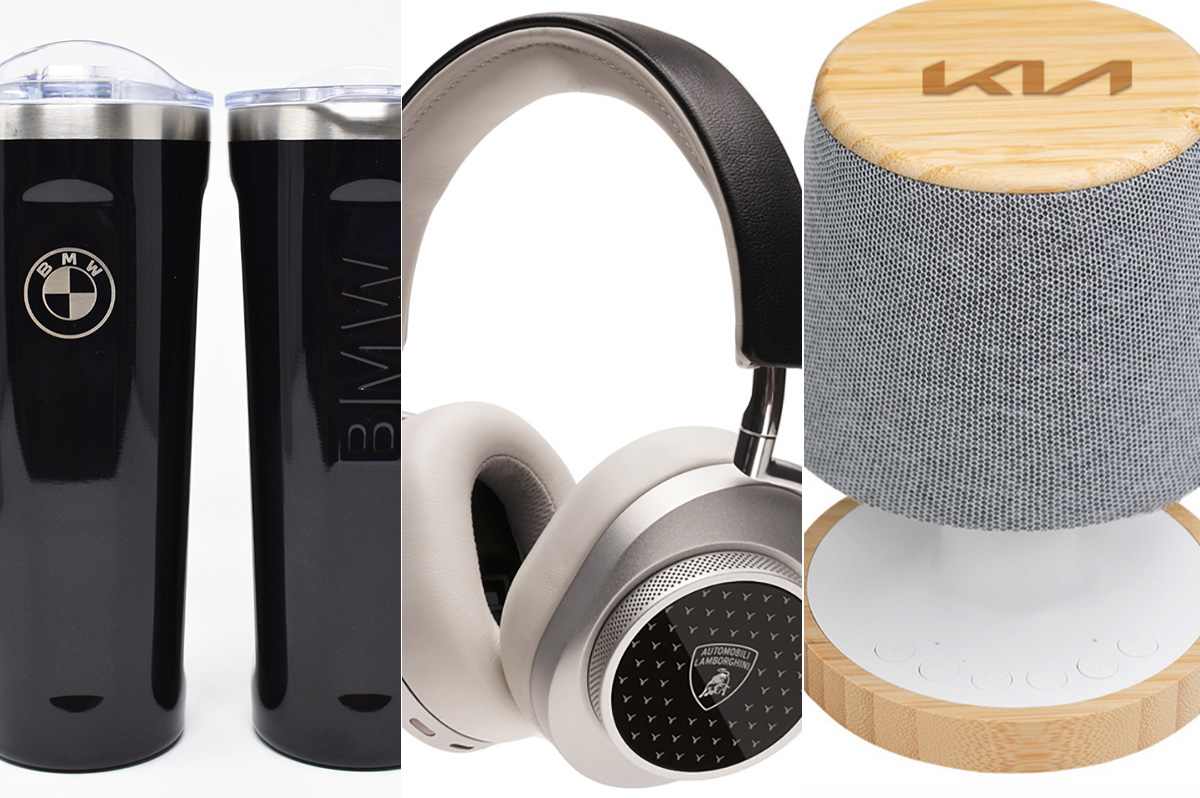
Here’s how to shift your holidays into high gear.
Bentley Bottle Stopper
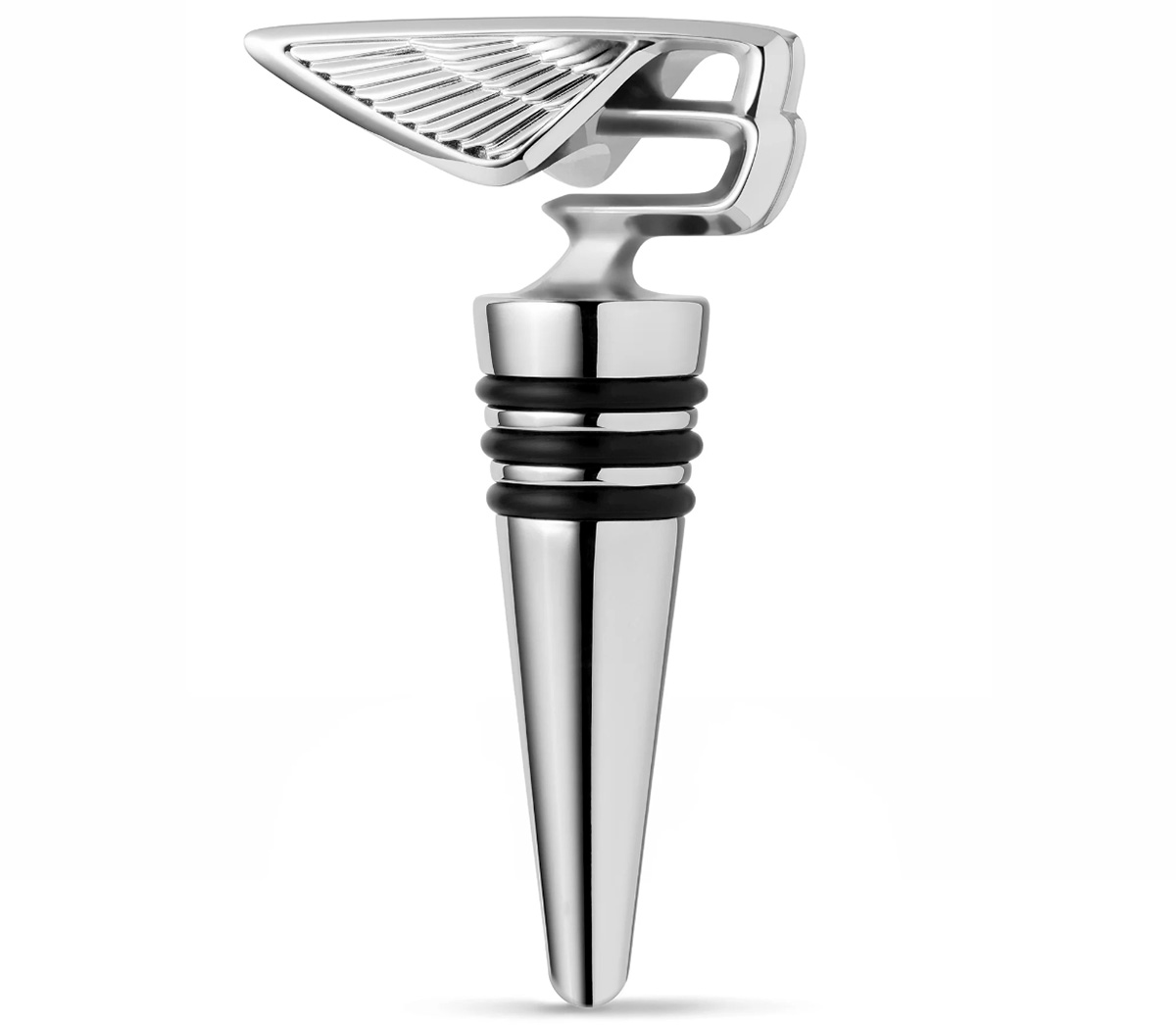
Pop your cork—in a good way—with a Bentley bottle stopper ($106), made of zinc alloy with chrome plating and rubber rings. The classy design is inspired by the automaker’s iconic “Flying B” mascot from 1930.
Subaru Motorsports Counter Stool
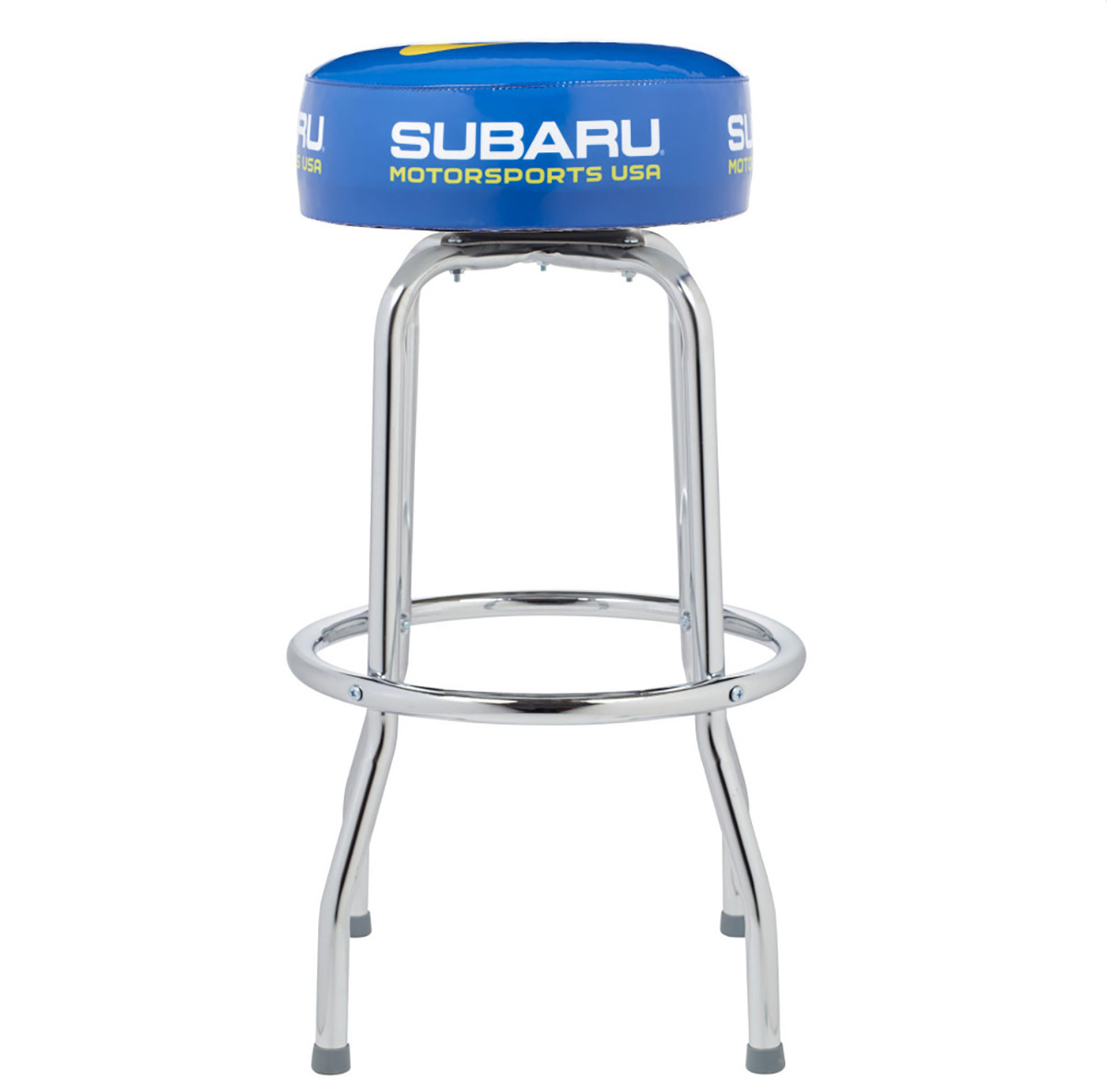
Belly up to the bar with the Subaru Motorsports Counter Stool ($175). The 30-inch-tall metal chair—with padded vinyl cover and automaker logo—is lightweight and swivels 360 degrees.
BMW Luxe Luggage
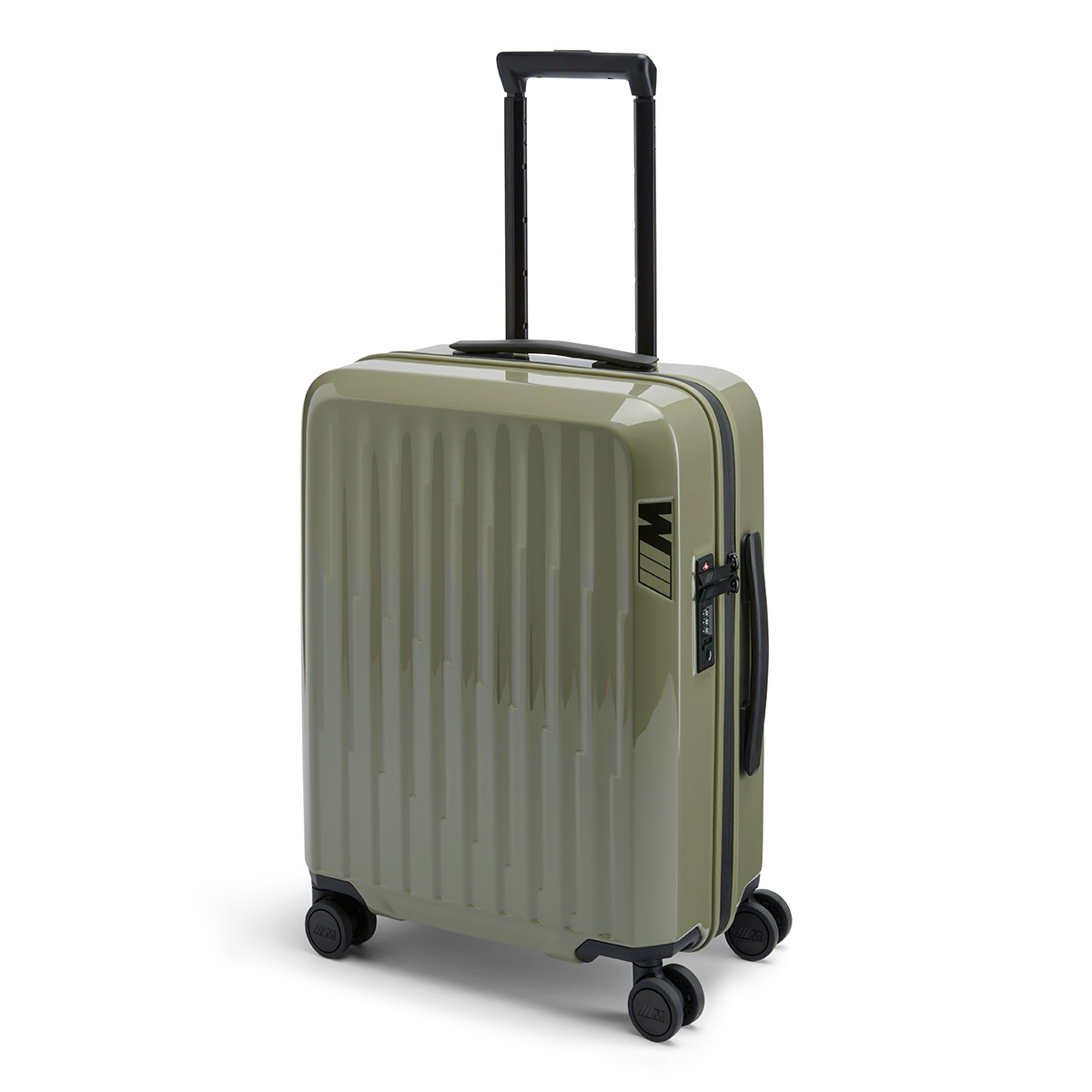
You won’t have trouble spotting this chic khaki-green BMW M Boardcase ($307) at airport baggage carousels. The high-performance “M” logo is etched on the durable polycarbonate casing, as well as on the main compartment zipper and all four of the sturdy double wheels. Comes with recycled lining, along with laundry and shoe bags.
Ford Yoga Gym Bag

The Ford Yoga Gym Bag ($15) has a wide handle and button strap to securely carry a yoga mat, as well as convenient pockets to stow water bottles and shoes. Made of black polyester, with reflective silver Ford logo. (Yoga mat not included.)
Kia Mini Lamp with Speaker/Sound
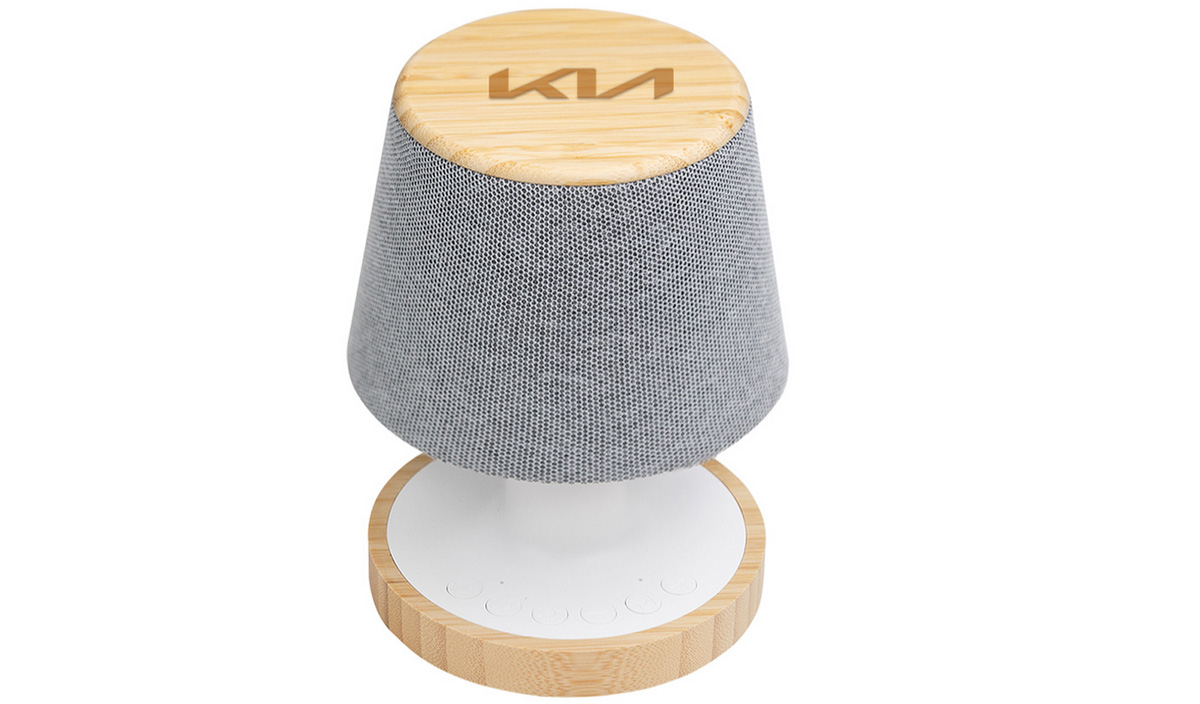
It doesn’t get much more Zen than a Kia Mini Lamp with Speaker and Sound Machine ($50). Made of bamboo, sturdy plastic and a fabric grill, the tiny wireless lamp has LED lighting with three settings. Pair with your phone to choose from eight soothing sounds: brook noise, bird chirp, forest bird, white bird, ocean wave, rainy day, wind and fireside.
Lexus Green Pro Set
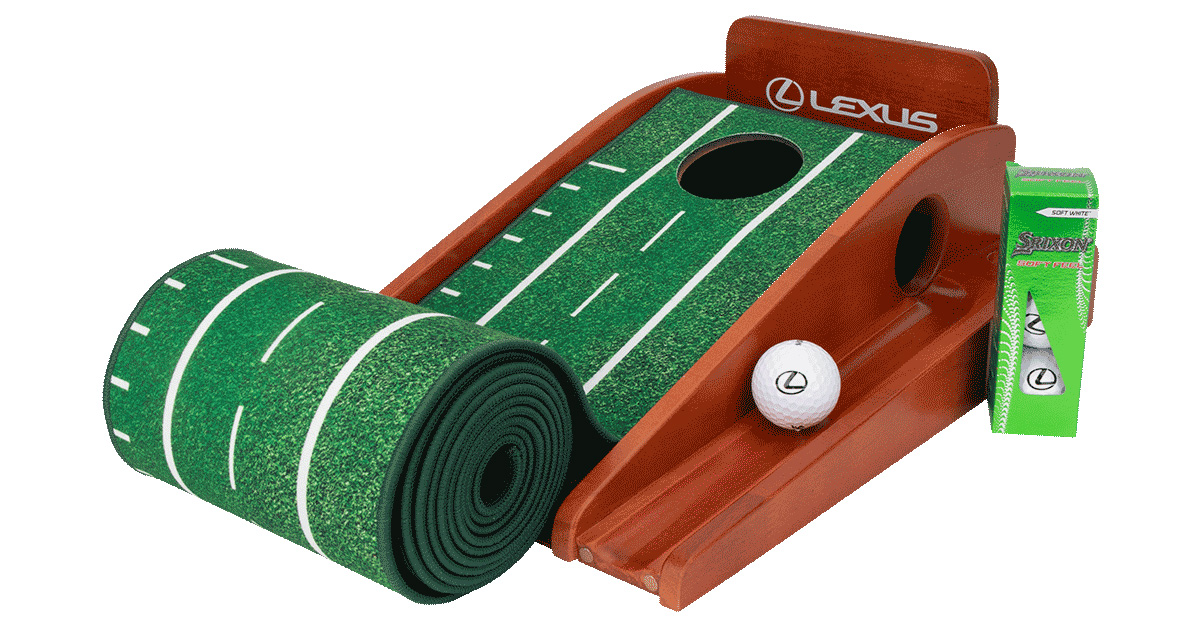
Practice makes perfect with the Lexus Green Pro Set ($257), a putting mat with “train-track markings” to help improve any golfer’s alignment. Lexus logo on the wood frame with automatic ball return.
Lamborghini Wireless Headphones
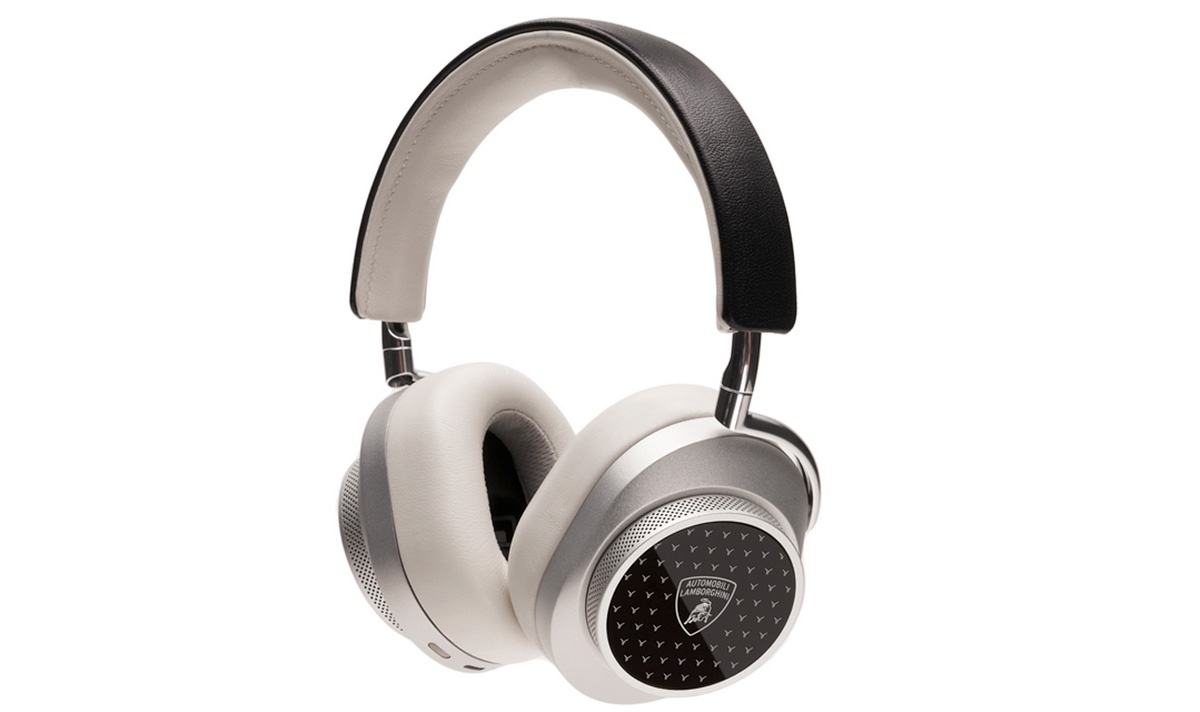
Turn on, tune in, drop out—well, at least at the end of a hectic day—with these Lamborghini Wireless MW75 Headphones by Master & Dynamic ($901). Batteries last up to 32 hours or up to 28 hours in active noise-canceling mode.
BMW Quatro Slim Travel Tumbler

The BMW Quatro Slim Travel Tumbler ($23) lives up to its name: sleek, smooth and scratch-resistant. Comes with leak-proof lid and non-spill design.
Ford Vintage Mustang Ceramic Mug

Giddy-up each morning with the Ford Vintage Mustang Ceramic Mug ($29). With cool blue stripes, the 14-ounce mug features a silver handle and iconic pony emblem.
My First Lamborghini by Clementoni
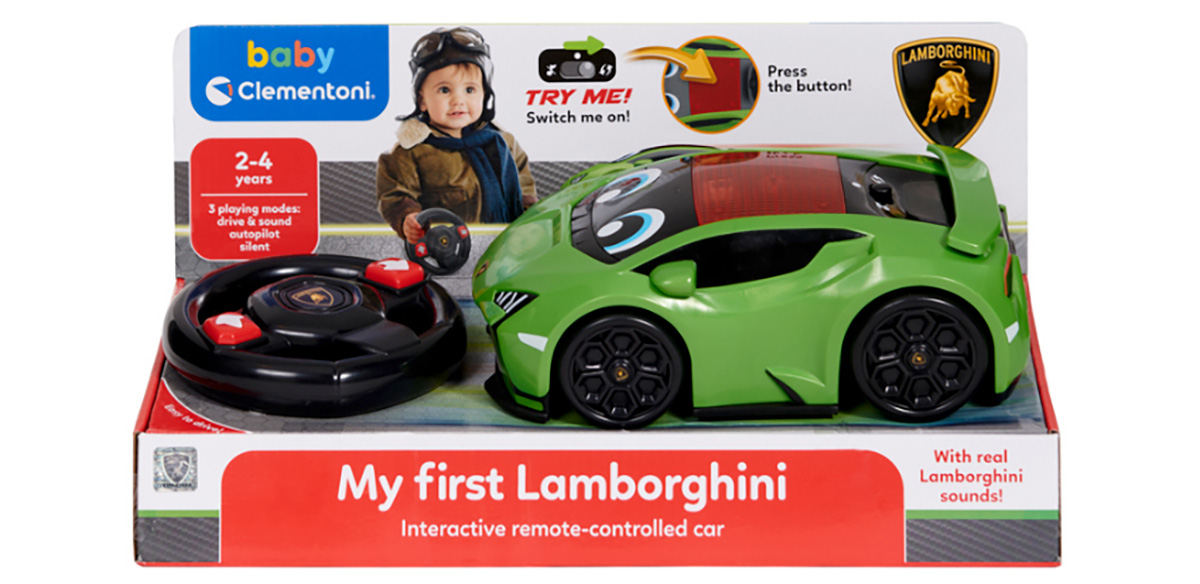
Proving it’s never too early to drive an exotic car, My First Lamborghini by Clementoni ($62) is for children ages two- to four-years old. Kids can activate the remote-control car by pressing the button on the roof or by using the remote. This Lambo certainly is less expensive than an entry-level Huracan, which starts at $250,000.
Rolls-Royce Cameo

For adults looking for their own pint-sized luxury ride, there’s the Rolls-Royce Cameo ($5,500). Touted as a piece of art rather than a toy, this miniature collectible is made from the same solid oak and polished aluminum used in a real Rolls. As with those cars, this one even has self-leveling wheel-center caps (which operate independently of the hubcaps so that the RR logo is always in the upright position).
Maserati Notebook
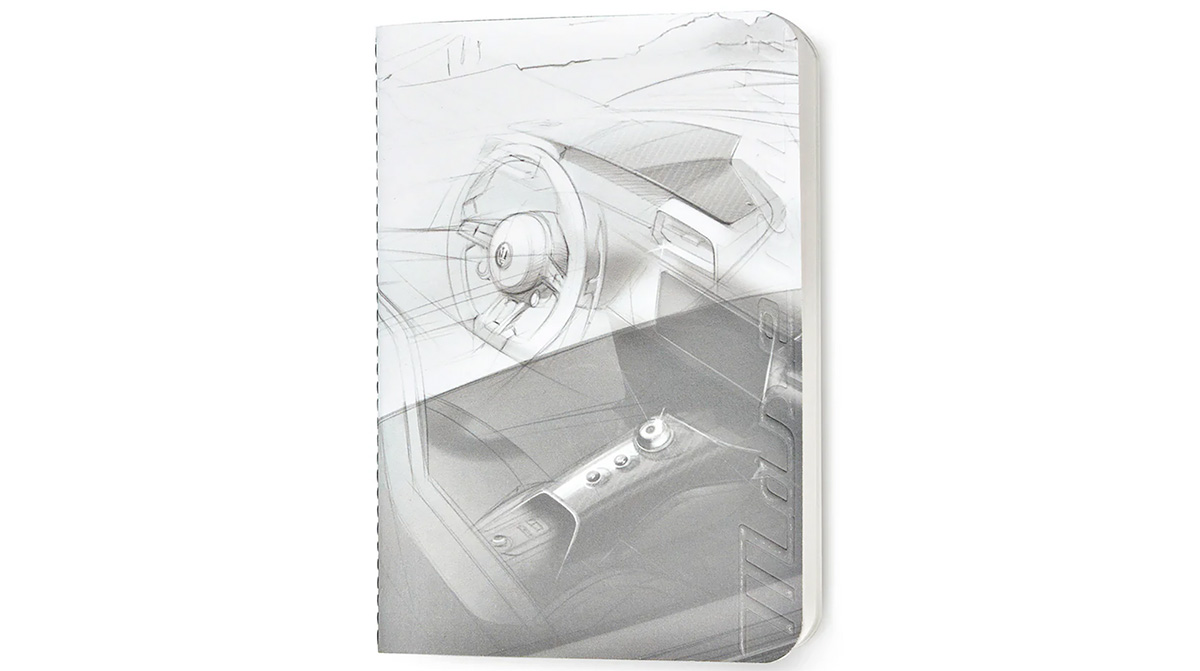
For those of us who still love the art of writing, the Maserati MC20 Sketch Note ($11) is an elegant notebook with 48 sheets of high-quality paper. The front and back covers feature stylish sketches of the interior of a Maserati MC20 supercar and the Maserati logo. Comes with saddle-stitched binding using black thread.
Dodge Demon Dog Collar
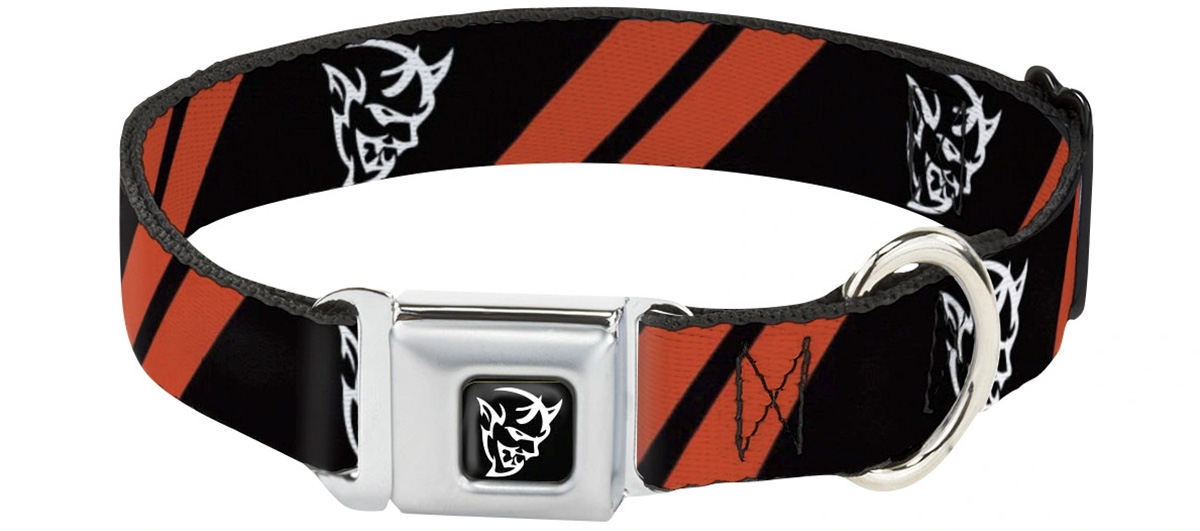
If your pooch is more Fluffy-kins and less the guard dog you sometimes need it to be, then there’s the Dodge Demon Seatbelt Buckle Dog Collar ($30). Made of steel and high-density polyester with a tiny seatbelt-buckle clasp, the collar is emblazoned with devilish Dodge Demon logos.

After a brief hiatus that started in late 2023, the Chevy Bolt—once a practical wallflower in the EV world—arrives back in showrooms in early 2026. It’s now sleeker, sassier, and less expensive than ever. And why not? Saving the planet should be affordable — and look good on Instagram.
CHEVY BOLT
$29,000
Range: 255 miles
0 to 60 mph: 7.5 seconds
Cargo space: 16.2 cu. ft.
Pros: Shapelier styling. Faster charging. Wallet-friendly price.
Cons: No speed demon. No AWD option. Modest towing capability.
If the previous Chevy Bolt was like a dependable friend who didn’t exactly turn heads, the new version has had a queer awakening. Still practical? Absolutely. Still efficient? You bet. But the exterior now boasts a sharper, wider stance, with slimmer headlights and punchier details that scream confidence instead of compromise.
Charging speed—which was anemic before—is significantly faster: roughly 100 miles in just 10 minutes at a fast-charging station. If you’re on a longer road trip and need to reach up to 80% battery capacity, it takes just 26 minutes—which is less than half the time of the previous model.
Range sits around 255 miles, so you’ll have no problem making it from your downtown apartment to that weekend cabin getaway—or your ex’s new city, if you’re feeling chaotic.
Regenerative braking is also improved, recapturing more energy for better efficiency and the ability for seamless one-pedal driving. In fact, lift your foot off the pedal and you can now come to a complete stop without touching the brakes.
As for speed, there’s now 210 horsepower—perfect for zipping through traffic (and faster than the Bolt’s archnemesis: the Nissan Leaf).
Overall, the ride is composed and confident—smooth over bumps, whisper-quiet, and surprisingly fun. No, this is not a performance diva, but it’s got lowkey swagger.
Inside, the Bolt is all grown up: cozy, modern and uncluttered, with soft-touch materials and ambient lighting that can match your mood. The cabin feels designed for people who appreciate good design—and good lighting for selfies.
There’s also enough tech to impress gadget-loving friends without being overwhelming. A massive, curved touchscreen runs Google Built-In, so your Maps, Assistant and playlists are always ready to go. Apple CarPlay and Android Auto are still here, and the interface feels logical, polished and just a touch playful.
And the suite of safety features is impressive: automatic braking, lane-keeping assist, blind-spot monitor, 360-degree camera, parking assist—it’s all here. But the crown jewel is Super Cruise, GM’s hands-free driving system that can take over on thousands of miles of highways. Forget route planning or battery-range concerns, this high-tech system does it all for you—including automatic lane changes on compatible roads.
Headroom and legroom are more than decent, especially for front-seat passengers. But for serious shopping mavens, rear cargo capacity is basically average. Luckily, the Bolt’s stowage quickly balloons to three times the size with the rear seats folded. (CityCenter, her I come!)
If the first Bolt seemed like that sweet environmentalist who handed out reusable straws, this one’s their supercharged offspring—still saving the planet, but now with a jawline and a Spotify playlist that slaps. It feels like an EV that makes sustainability something to celebrate, not tolerate.
To me, you could say the Bolt didn’t just come back — it came out, fully charged and ready to shine.

The BMW X4 and its spicy sibling, the X4 M, are like that annoying A-list couple: One’s got the sleek, stylish look that turns heads, and the other is the high-energy dancer in six-inch heels who just won’t leave the stage. Both deliver, but in different flavors.
BMW X4
$57,000
MPG: 21 city/27 highway
0 to 60 mph: 6.2 seconds
Cargo space: 18.5 cu. ft.
PROS: Effortless acceleration. Easy handling. Elegant looks.
CONS: Eensy-weensy side-door storage. Vexing electronics.
The BMW X4 compact SUV is all about presence—a sloping roofline screams “crossover coupe,” while the refreshed front fascia exudes enough attitude to feel modern without overdoing it.
Inside, the X4 is full glam. Cabin materials lean upscale, with form-fitting, multi-adjustable seats that are heavenly. And optional upholstery colors go beyond basic black. Think mocha brown, oyster beige and even a bold red if you’re feeling extra smart.
A curved display sweeps across the dash like an opera diva, with a nice mix of touchscreen and dial controls. But while some drivers may swoon over the nav system’s adaptive map mode—which enlarges the view on the screen automatically every time you approach a turn, intersection or merge lane—it took some doing for me reset the monitor to the old-school static view I prefer.
Performance-wise, the base model—the xDrive30i—starts with a turbocharged four-cylinder (good for 248 horsepower). But the real sweet spot is the six-cylinder xDrive40i, which pumps out a robust 382 horses. This is not a sports car, but it sure is playful—like a friend who insists on karaoke after midnight and somehow nails every note.
Handling is sharp for a crossover, thanks to BMW’s all-wheel drive and well-tuned suspension. But while the sharply angled roof sure is sexy, it also means limited rear headroom and cargo space. Luckily, the stowage expands to almost three times the size by folding down the backseats.
Of course, buyers aren’t choosing the X4 because it’s an overt hauler. They want intriguing looks and, well, an ego boost. I found this Bimmer to be daring enough for date night, practical enough for groceries and fun enough to take on twisty back roads.
BMW X4 M
$81,000
MPG: 15 city/20 highway
0 to 60 mph: 3.9 seconds
Cargo space: 18.5 cu. ft.
PROS: Exhilarating power. Exotic feel. Elegant lines.
CONS: Anemic fuel economy. Excessive sticker price.
If the BMW X4 is like your chic brunch buddy, then the high-performance X4 M is the club friend who orders tequila shots for everyone and convinces the DJ to play Beyoncé’s “Renaissance” front to back. This thing is drama—in the best way.
Under the hood, the X4 M packs BMW’s beloved 3.0-liter twin-turbo inline-six, tuned for 473 horsepower. In the Competition trim level, you get a staggering 500 horsepower and can fly from 0 to 60 mph in as little as 3.2 seconds. (Yes, that’s quicker than some exotic race cars. But for me, driving either one of these bad boys was like voguing down a runway in broad daylight.)
The styling cues crank things up, too: aggressive air intakes, quad exhaust tips, performance wheels and a slightly angry stance. The X4 M doesn’t just look sporty, it seems to be challenging every vehicle out there to a dual. Inside, the M-specific touches—sport seats, carbon-fiber accents and customizable drive modes—reminded me that this isn’t just another pretty face.
On the road, this BMW is absolutely thrilling. Steering is precise, grip is endless and the engine’s growl feels more Broadway belter than coffeehouse crooner. Sure, the ride is firm—not exactly built for Sunday yoga Zen class—but that’s part of the appeal. Anyone shopping this car wants intensity.
Alas, practicality does take a hit. As with the regular BMW X4, rear cargo area is tight. And eco-conscious drivers will be put off by the low fuel economy here. But let’s be real: no one buys an X4 M for Costco runs. They buy it because of the over-the-top performance and panache—and just enough utility to make sense.
IOW, the X4 M is for extroverts, people who thrive on making an entrance. If the standard X4 is your sophisticated weekday outfit, the X4 M is your sequined Saturday night.

